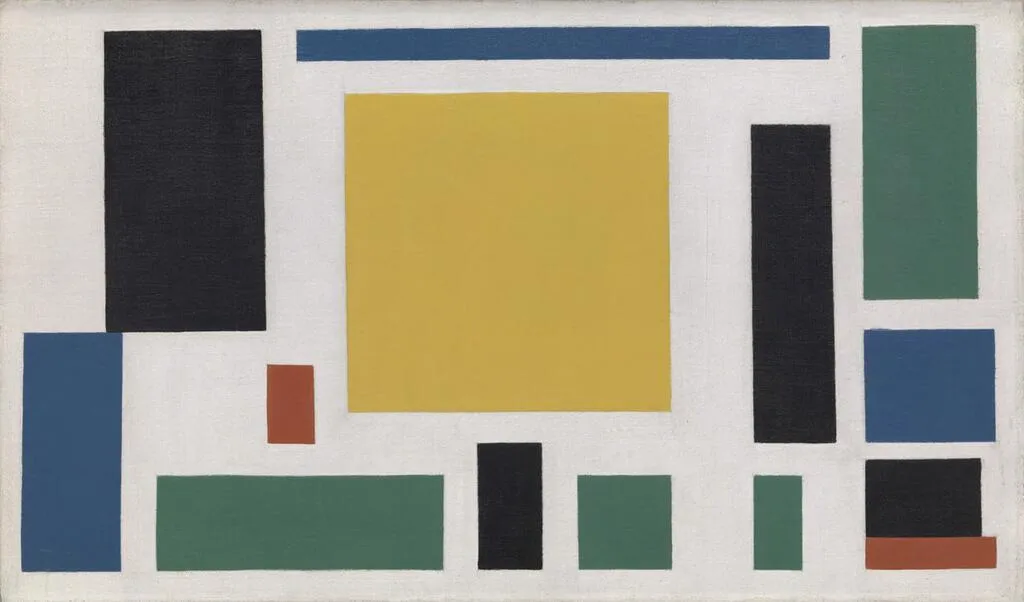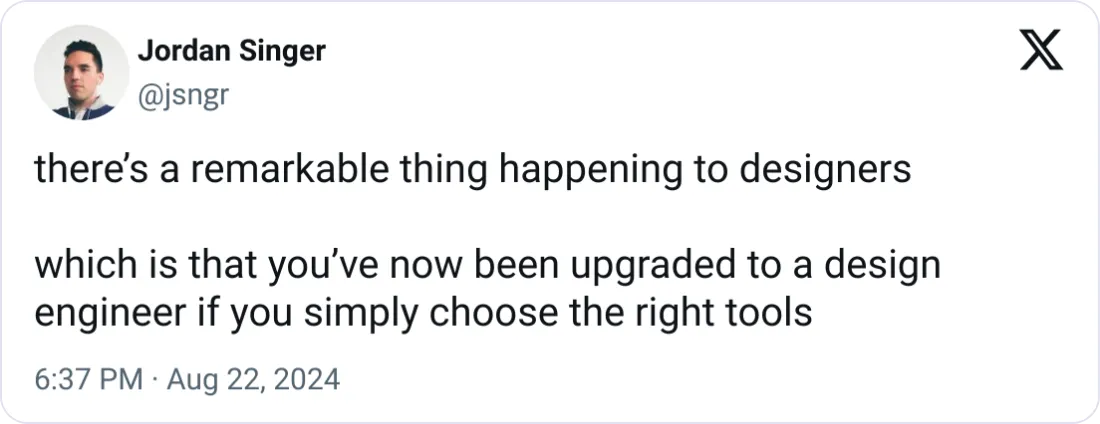Designers should build
How we're about to blur the lines between design and development, and why it matters.

Theo van Doesburg: Composition VIII (The Cow), De Stijl, 1918
I'll let you in on a little secret. Designers never design the actual product. Our meticulously designed screens never meet a single paying user's eyeballs. What we do is mimic the environment in software that approximates how it will render. The design facing the users is almost never created by a designer – it's created by developers.
Ohhh, that one stung, didn't it? But it's true.
I've wrestled with this dilemma since day one of my career. Despite being formally schooled in coding (I even tackled Assembly!) I just couldn't overcome the hurdle of not seeing what I was building. My fingers itched to tweak the visuals – I realized I wasn't passionate about coding itself, but saw it as a means to an end. As a visual problem solver, tackling issues with lines of characters feels like trying to drink water with a slotted spoon. It's possible, sure, but far from efficient or satisfying.
This is the crux of the problem: designers don't think like developers. It's why there are so few developer-designers and vice versa. The skills complement each other beautifully, but rarely coexist in one person. And here's the kicker – designing digital experiences requires at least some coding proficiency. Without it, designers remain blissfully unaware of the limitations and best practices of their medium.

That said, the role of Designers is about to transform dramatically. We're seeing a surge in interaction and visual coding interfaces. This is undoubtedly the future. Designers will regain control over the full product experience – something not seen since Macromedia's heyday. This is HUGE. The last time we wielded this level of control, it ignited what we now call 'the golden age of digital design'.
This shift isn't just a minor tremor in our industry; it's a tectonic plate movement. We're talking about empowering designers with proper development capabilities without writing a single line of code, potentially revolutionizing the entire product creation process. As these once-separate domains converge, we might witness the emergence of a new designer breed – one that can truly shape the user experience from concept to final product.
